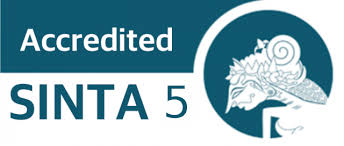Pelatihan Model Bisnis dan Kreatifitas Pengurus dan Anggota Koperasi Glintung Go Green (3G) Kota Malang
Keywords:
Koperasi, Model Bisnis, KreatifitasAbstract
Kualitas SDM merupakan faktor penentu dalam keberlanjutan sebuah organisasi baik organisasi yang berorientasi profit maupun non-profit. Peningkatan kualitas SDM di bidang kewirausahaan merupakan langkah penting bagi organisasi seperti Koperasi 3G dalam menjaga keberlanjutan usaha dan pengembangan bisnis. Rencana pengembangan bisnis di Koperasi 3G membuat pengurus harus memiliki perspektif bisnis yang lebih baik. Melihat adanya kebutuhan tersebut, Departemen Manajemen FEB UB memiliki kewajiban moral untuk menularkan ilmu kepada pengurus dan anggota Koperasi 3G melalui pelatihan model bisnis dan peingkatan kreatifitas
Downloads
References
Battilana, J. (2018). Cracking the organizational challenge of pursuing joint social and financial goals: Social enterprise as a laboratory to understand hybrid organizing. M@n@gement, 21(4), 1278–1305. https://doi.org/10.3917/mana.214.1278
Cocquyt, A., Crucke, S., & Slabbinck, H. (2020). Organizational characteristics explaining participation in sustainable business models in the sharing economy: Evidence from the fashion industry using conjoint analysis. Business Strategy and the Environment, 29(6), 2603–2613. https://doi.org/10.1002/bse.2523
Fleenor, J. W., McCauley, C. D., & Brutus, S. (1996). Self-other rating agreement and leader effectiveness. Leadership Quarterly, 7, 487–506.
Knight, G. A., & Cavusgil, S. T. (2004). Innovation, Organizational Capabilities, and the Born-Global Firm. Journal of International Business Studies, 35(2), 124–141.
Morris, M. H., Santos, S. C., & Kuratko, D. F. (2021). The great divides in social entrepreneurship and where they lead us. Small Business Economics, 57(3), 1089–1106. https://doi.org/10.1007/s11187-020-00318-y
Oepen, M. (2000). Environmental Communication for Sustainable Development. 32–37.
Phillips, W., Lee, H., Ghobadian, A., O’Regan, N., & James, P. (2014). Social Innovation and Social Entrepreneurship. Group & Organization Management, 40(3), 428–461. https://doi.org/10.1177/1059601114560063
Saha, K., Kumar, R., Dutta, S. K., & Dutta, T. (2017). A content adequate five-dimensional Entrepreneurial Orientation scale. Journal of Business Venturing Insights, 8, 41–49. https://doi.org/10.1016/j.jbvi.2017.05.006
Thatcher, A., & Yeow, P. H. (2016). Human factors for a sustainable future. Appl Ergon, 57, 1–7. https://doi.org/10.1016/j.apergo.2016.05.007
Valdez, M. E., & Richardson, J. (2013). Institutional Determinants of Macro-Level Entrepreneurship. Entrepreneurship Theory and Practice, 37(5), 1149–1175. https://doi.org/10.1111/etap.12000
Downloads
Published
How to Cite
Issue
Section
License
Copyright (c) 2024 Fatchur Rohman, Radityo Putro Handrito

This work is licensed under a Creative Commons Attribution-ShareAlike 4.0 International License.
Similar Articles
- Gustina Masitoh, Wardianto Wardianto, Turmuji Turmuji, Rusmiati Rusmiati, Ajeng Najah Fauziah, LukmanWahyu Pratama, Pelatihan dan Pendampingan Pemasaran Berbasis Digital Marketing produk UMKM Tahu Bu Siti Bandarjaya , Jurnal Pengabdian kepada Masyarakat Nusantara: Vol. 5 No. 4 (2024): Jurnal Pengabdian kepada Masyarakat Nusantara (JPkMN) Edisi September - Desember
- Asmi Ayuning Hidayah, Isti Riana Dewi, Telma Anis Safitri, Pengembangan Digital Marketing dan E-Marketplace dalam Mendukung Inovasi dan Ekspansi Pasar Bulu Mata di Desa Toyareka Kabupaten Purbalingga , Jurnal Pengabdian kepada Masyarakat Nusantara: Vol. 6 No. 3 (2025): Edisi Juli - September
- Yusuf Yusuf, Christianingrum Christianingrum, Padlun Fauzi, Pendampingan Umkm Dalam Penggunaan Digital Marketing Pengelola Desa Wisata Perlang, Kabupaten Bangka Tengah , Jurnal Pengabdian kepada Masyarakat Nusantara: Vol. 5 No. 4 (2024): Jurnal Pengabdian kepada Masyarakat Nusantara (JPkMN) Edisi September - Desember
- Melia Dianingrum, Bilqis Hifdhilllah, Mugiarti Mugiarti, Peningkatan Pertumbuhan Ekonomi Melalui Pendampingan dan Penerapan Strategi Digital Marketing , Jurnal Pengabdian kepada Masyarakat Nusantara: Vol. 4 No. 4 (2023): Jurnal Pengabdian kepada Masyarakat Nusantara (JPkMN)
- Hanung Eka Atmaja, Budi Hartono, Rahmat Subur Santoso, Pengembangan Umkm Desa Balesari, Kecamatan Windusari, Kabupaten Magelang Melalui Pelatihan Digitalisasi Bisnis , Jurnal Pengabdian kepada Masyarakat Nusantara: Vol. 6 No. 1 (2025): Jurnal Pengabdian kepada Masyarakat Nusantara Edisi Januari - Maret
- Adella Azzahra Zaniya, Pramana Saputra, Theresa Julistiani, Indah Puspita Cahyani, Akbar Parlindungan Sihombing, Pemberdayaan Ibu-Ibu PKK Dusun Puring Melalui Pelatihan Pemasaran Digital UMKM Lokal , Jurnal Pengabdian kepada Masyarakat Nusantara: Vol. 6 No. 4 (2025): Edisi Oktober - Desember In Press
- Lelly Rahma Agustin, Hafiz Saifuddin Musthofa, Sheptya Zoya Maharanie, Ahmad Rifa'i, Rizka Dwi Navilla, Strategi Pemasaran pada UMKM Rengginang Bu Suminah , Jurnal Pengabdian kepada Masyarakat Nusantara: Vol. 6 No. 2 (2025): Jurnal Pengabdian kepada Masyarakat Nusantara Edisi April - Juni
You may also start an advanced similarity search for this article.

 Fatchur Rohman,
Fakultas Ekonomi dan Bisnis, Universitas Brawijaya,
Indonesia
Fatchur Rohman,
Fakultas Ekonomi dan Bisnis, Universitas Brawijaya,
Indonesia 












